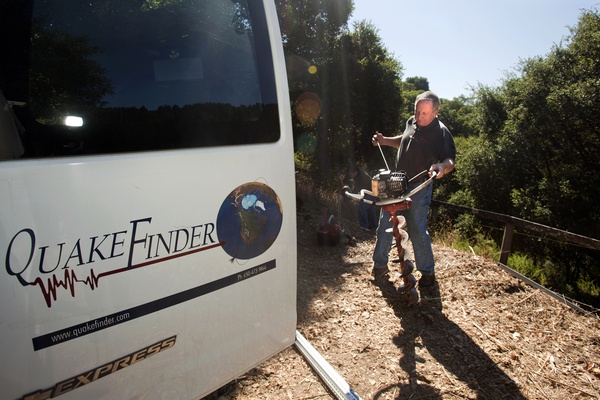You are here
Researchers Develop Controversial Earthquake Detection Network
Primary tabs
Homeland Security Newswire - August 18, 2011

A QuakeFinder network installation // Source: newsvine.com
Researchers at a Silicon Valley company are hard at work developing an experimental network of electromagnetic sensors that could predict large earthquakes as much as two weeks in advance; the theory behind the research is disputed, but Tom Bleier, the inventor and chief engineer behind project QuakeFinder, hopes to prove seismologists wrong.
Researchers at a Silicon Valley company are hard at work developing an experimental network of electromagnetic sensors that could predict large earthquakes as much as two weeks in advance.
The theory behind the research is disputed, but Tom Bleier, the inventor and chief engineer behind project QuakeFinder, hopes to prove seismologists wrong. Under the project, engineers will install roughly 200 five-foot tall sensors near fault lines in California to measure changes in underground magnetic fields and to detect electrically charged particles in the air.
These sensors are designed to detect changes in electromagnetic fields that Bleier believes can be used to predict earthquakes, but seismologists have dismissed this concept as erroneous. The U.S. Geological Survey, which sponsors most earthquake research, does not support electromagnetic field research because it believes it is scientifically invalid.
Bleier, a satellite engineer who has worked for thirty-seven years developing ground-control systems and satellites, maintains that the theory behind QuakeFinder is valid and that seismologists who dismiss his theories are clinging to traditional ways of thinking.
“The U.S.G.S. spends 99 percent of its time looking at mechanical indicators,” like bulges and movements in the earth, Bleier said. “In our case, we’re looking for electromagnetic indicators.”
With the data from the sensors, Bleier believes that he can forecast earthquakes with magnitudes greater than 5.0 as much as two weeks before they hit. He added that with additional analysis of electromagnetic patterns, he might even be able to predict the moment an earthquake would strike within a day or two.
To back up his theory, Bleier points to the fact that QuakeFinder devices detected electromagnetic pulses similar to lightning two weeks before an earthquake struck near San Jose, California in 2007. The sensors also detected charged air particles and infrared light. Bleier noted that similar readings were detected before an earthquake in Peru last year.
Bleier believes that these electromagnetic pulses are created when rocks are squeezed creating an electrical current, while others, who believe in his theory, conjecture that the movement of water deep underground could be causing the electromagnetic anomalies.
Critics of the theory say that lightning was the most likely culprit for the electrical signals that resembled lightning or one of the many other sources of electrical charges in the atmosphere. Critics also say that QuakeFinder may have flawed instruments as U.S. Geological Survey monitors did not detect any electromagnetic changes before a 2004 earthquake in Parkfield.
Michael Blanpied, an earthquake hazards program coordinator with the U.S. Geological Survey, said supporters of electromagnetic-based theories were often naïve about seismologists’ work which has shown that earthquakes are nearly impossible to predict within a narrow time frame.
QuakeFinder is a branch of Stellar Solutions, a satellite consulting firm, and so far the company has invested more than $10 million to develop the technology over the last decade. To complete the project, the company is seeking donations. Each sensor costs roughly $50,000 to manufacture and seventy have been installed in California.



Recent Comments